In the Moment:
Michael Frye's Landscape Photography Blog
by Michael Frye | Oct 6, 2016 | Composition, Light and Weather
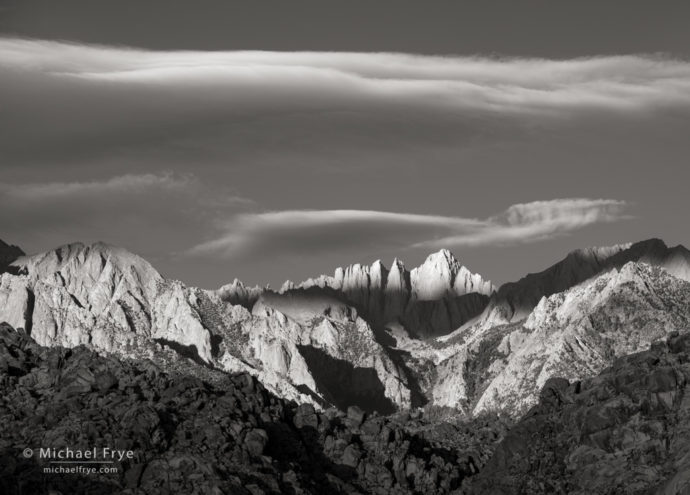
Sunrise on Mt. Whitney from the Alabama Hills, CA, USA
On our trip to the eastern Sierra last week Claudia and I made a detour down to the Alabama Hills. This area is a bit further from home than our usual eastside haunts, so we don’t go there often, and I sometimes forget how amazing it is. The jumbled rocks of the Alabama Hills are interesting and photogenic in their own right, but combined with the abrupt escarpment of the mountains to the west… well it’s just spectacular.
(more…)
by Michael Frye | Oct 2, 2016 | Digital Darkroom, Yosemite Photo Conditions
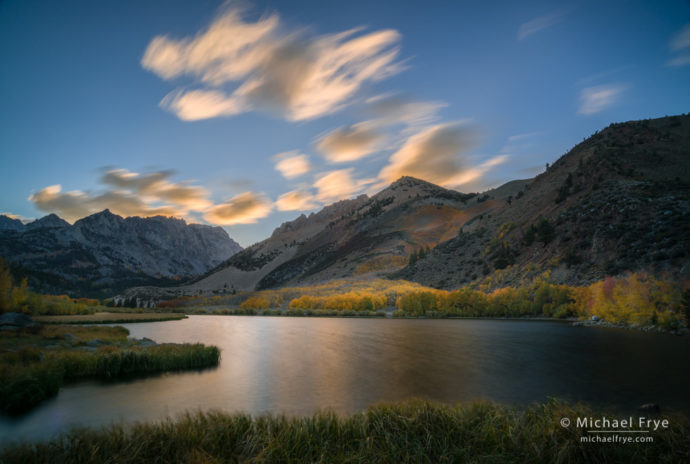
Sunset clouds over North Lake, autumn, Inyo NF, CA, USA
Claudia and I are back home, but we had fun photographing on the east side last week. Every day we saw more color in Bishop Creek Canyon, and the high-elevation aspens were looking great when we left yesterday.
I made this photograph Friday evening. We had been photographing intimate scenes along the south fork of Bishop Creek for a couple of hours, but there were some clouds hugging the crest of the mountains, so I headed to North Lake where I could get a wider view if the clouds turned color at sunset.
(more…)
by Michael Frye | Sep 28, 2016 | Yosemite Photo Conditions
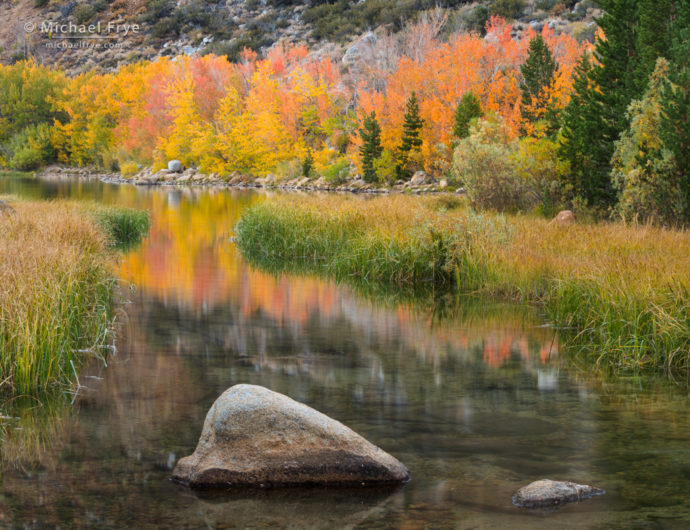
Aspens, reeds, and reflections, Bishop Creek Canyon, Inyo NF, CA, USA
Claudia and I are over on the eastern side of the Sierra checking out the early fall color. The high-elevation aspens typically start turning over here in late September, and they’re right on schedule, or maybe even a little early compared to some years. We drove up Bishop Creek Canyon yesterday, and found lots of color near the 9,000-foot level around Lake Sabrina and North Lake. I’d say these areas are near peak already, with a few bare trees, and some green, but probably 70 to 80 percent of the aspens turning.
(more…)
by Michael Frye | Sep 22, 2016 | Composition
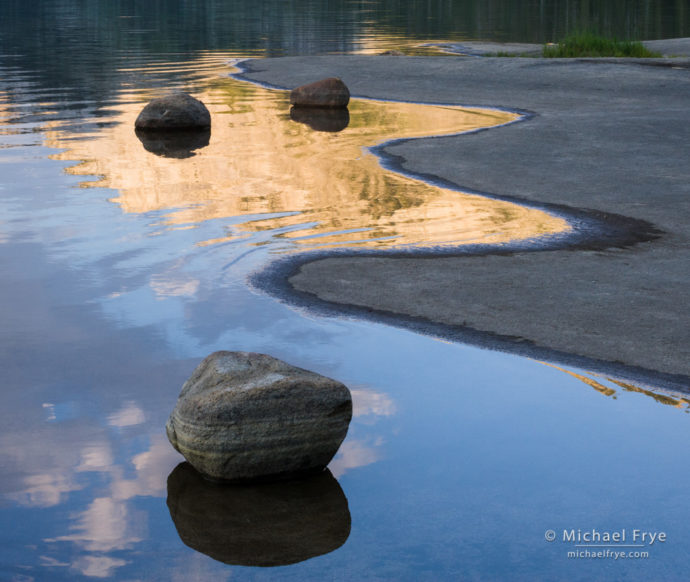
Rocks and reflections along the shore of Tenaya Lake, Yosemite. This image features both curves and circles.
I really like curved lines. I was reminded of this last weekend when my friend Mike Osborne showed me some of his junkyard abstracts on his iPad. All the photographs were wonderful and imaginative, but the ones I liked best often had curves. And many of my own favorite photographs have curves too. Curves look organic, and sensuous, and add a certain visual flow to a photograph that’s hard to generate without them.
(more…)
by Michael Frye | Sep 11, 2016 | Night Photography
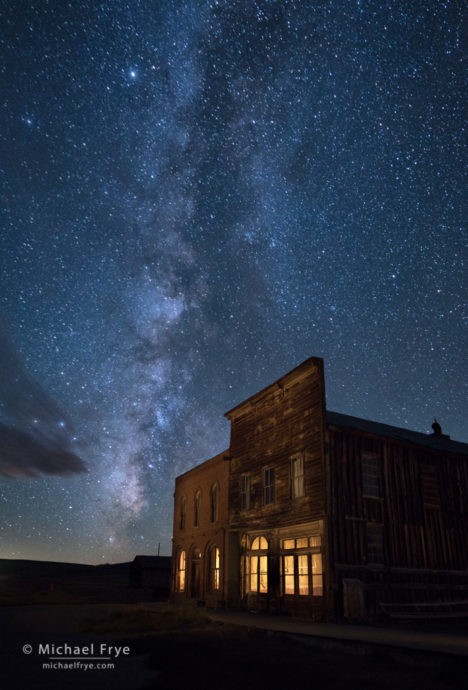
DeChambeau Hotel and I.O.O.F. Hall at night, Bodie State Historic Park, CA, USA
On the last night of our recent Starry Skies Adventure workshop we went to Bodie, which is always a great place for night photography. As the Milky Way moved into the southwest that evening it lined up well with these two buildings along Main Street, the DeChambeau Hotel and I.O.O.F. (Independent Order of Odd Fellows) Hall. I had never photographed this view of Bodie before so decided to try it, and was joined by several other people in the workshop.
I knew the lighting would be complicated, but that’s part of the fun of photographing Bodie at night. You can do relatively simple light-painting there, or, if you’re up for a challenge, try something complex. Here we wanted make it look as if the buildings were lit from the inside (even though the interiors were locked and inaccessible to us). That’s not really hard to do – just shine flashlights through the windows. The hard part was figuring out how to keep yourself out of the frame while doing so. The solution was to do each part of the lighting in a separate frame, and then mask off the unwanted areas of that frame (like a person holding a flashlight) in Photoshop.
(more…)
by Michael Frye | Sep 8, 2016 | Critiques
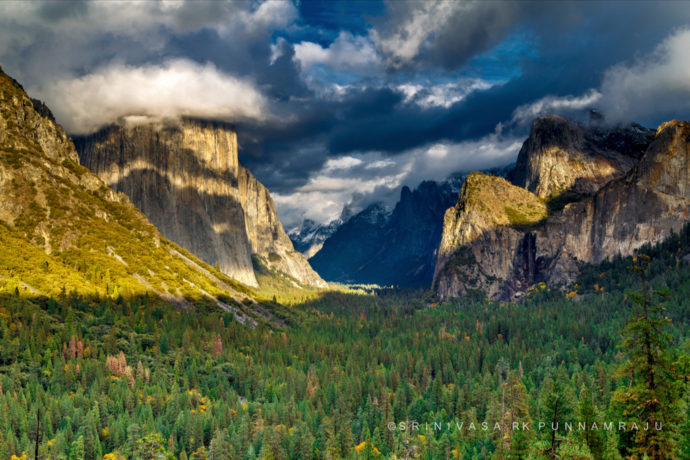
Yosemite Valley View by Srinivasa Punnamraju
The Photo Critique Series is not dead! It just took a long vacation. 🙂 This time we’ll look at a photograph by Srinivasa Punnamraju from Tunnel View in Yosemite.
Light and Weather
Srinivasa was lucky to catch some dramatic weather at Yosemite’s most iconic location, Tunnel View. There were plenty of interesting clouds overhead, and some nice mottled patterns of light and dark on the cliffs – especially the striped bands on El Capitan to the left.
(more…)
by Michael Frye | Sep 7, 2016 | Night Photography
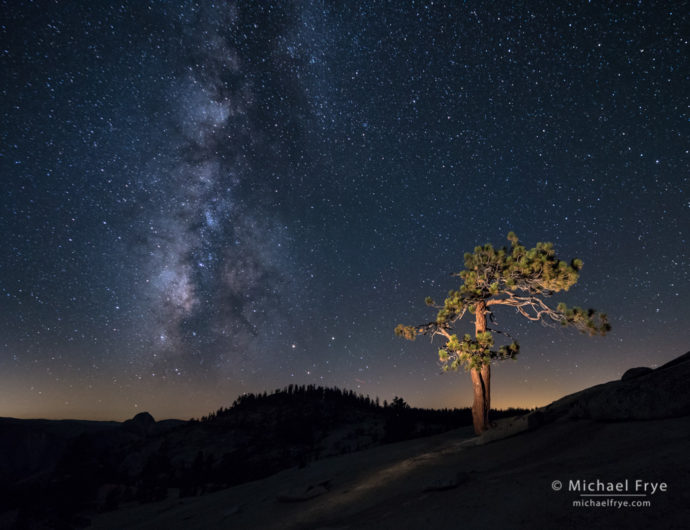
Jeffrey pine and the Milky Way, Yosemite NP, CA
We conducted two more workshops last week, our second editions this summer of the Inside Bodie and Starry Skies Adventure workshops. We had a lot of fun once again, with great conditions and really nice people.
I made this photo on the first night of our Starry Skies workshop near Olmsted Point in Yosemite. Several members of our group and I framed views of this photogenic Jeffrey pine with the Milky Way and Half Dome in the distance. We made some exposures with just starlight, then tried to light the tree with a flashlight. Later we did some more complex lighting, but I ended up liking this simple version with just one flashlight aimed at the tree. We used a homemade snoot on the flashlight to narrow the beam and prevent too much light from spilling onto the rocks below the tree.
(more…)
by Michael Frye | Aug 28, 2016 | Night Photography
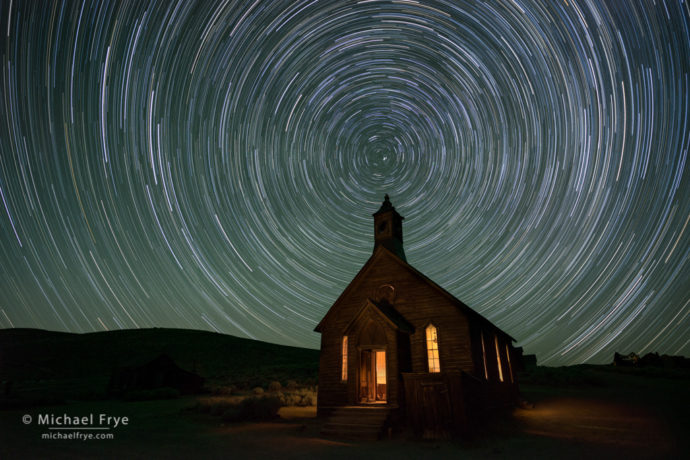
Star trails over the Methodist Church, Bodie State Historic Park, CA, USA
We’ve been able to take workshop groups into Bodie at night several times in recent years, which is always a lot of fun. But I’d never captured star trails there, mainly because star trails take a long time, and I’d wanted to spend my limited time there doing other things with the class. But during our last night session there a couple of the participants and I decided to try photographing what’s become a Bodie classic – star trails over the Methodist Church. The church works perfectly for this because you can line up the steeple with the North Star and create concentric circles overhead.
(more…)
by Michael Frye | Aug 25, 2016 | Announcements
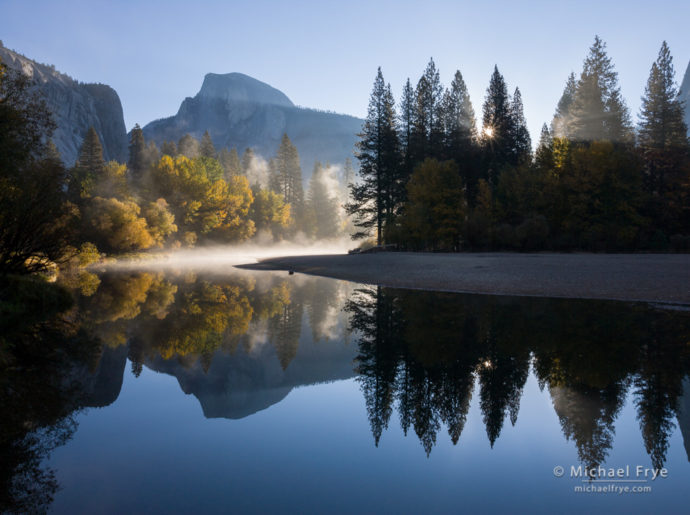
Autumn Sunrise, Half Dome and the Merced River, Yosemite National Park, California
“Within National Parks is room – glorious room – room in which to find ourselves, in which to think and hope, to dream and plan, to rest and resolve.”
— Enos A. Mills
Happy 100th Anniversary to the National Park Service!
— Michael Frye
by Michael Frye | Aug 21, 2016 | Composition, Vision and Creativity
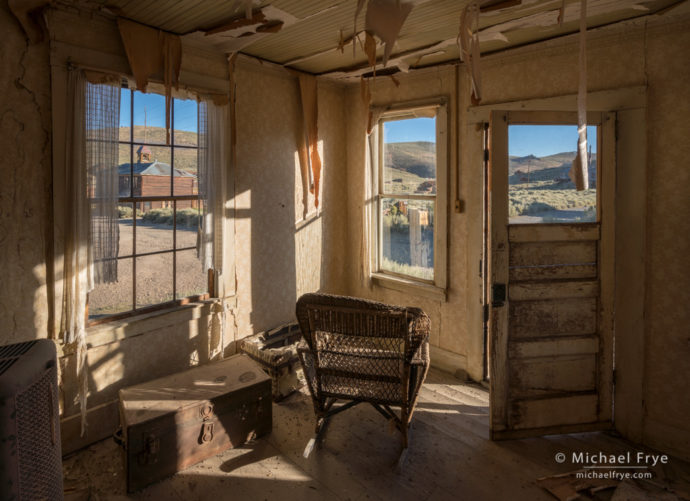
McMillan House interior, Bodie State Historic Park, California. The high contrast of this scene required using Lightroom’s HDR Merge. Also, I deliberately avoided having sunlit areas touch the borders of the image. A bright spot along the edge would pull the viewer’s eye out of the photograph.
As I’ve explored this place, I’ve realized that I’m not as interested in the abandoned mining equipment and machinery, as fascinating as some of those things are. I’m drawn more to the places where people once ate and slept and drank and socialized, and left behind the artifacts of their lives – furniture, cooking utensils, books, magazines, pictures, cans, bottles, a baby carriage, a bird cage, sewing machines, coats, pants, hats, shoes…
(more…)


















